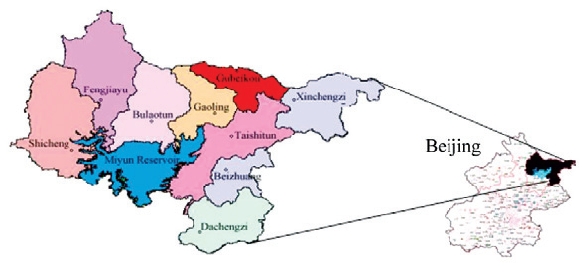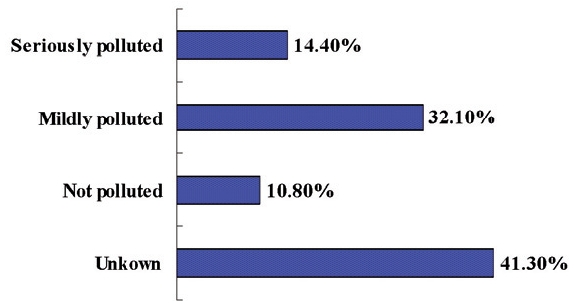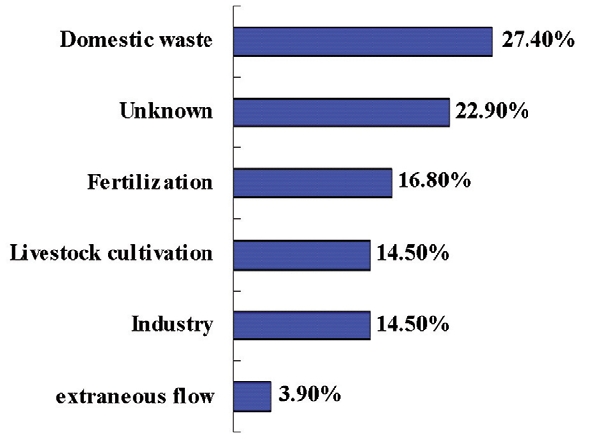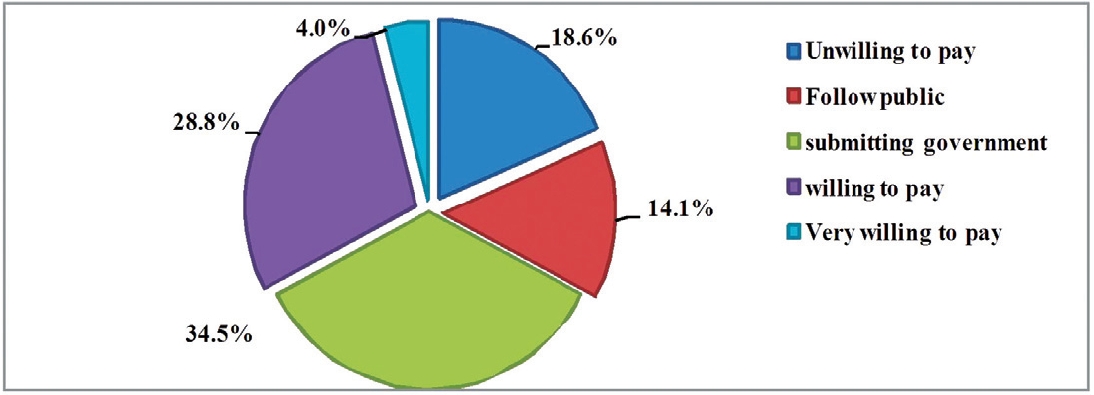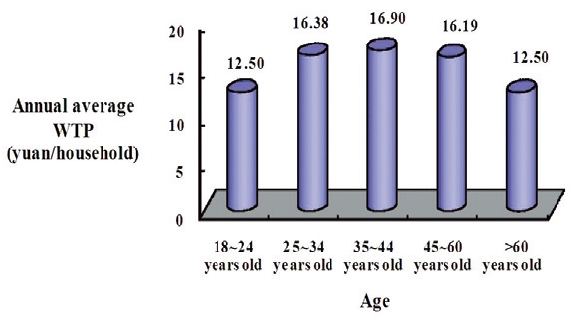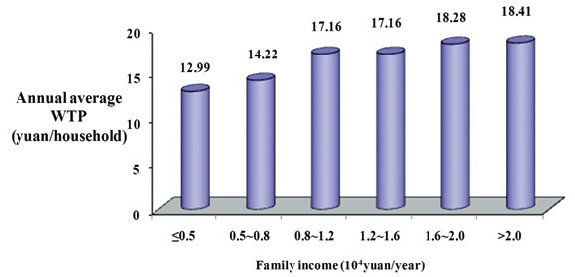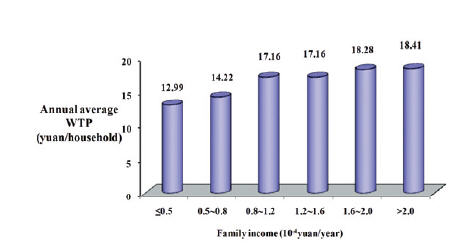



Eutrophication of major lakes and water systems in China has been rapidly getting worse since the 1980s, and has also received worldwide attention. The recent widely publicized cyanobacteria bloom outbreaks in Tai Lake (Taihu) in southeastern China, and many other Chinese water supply impoundments, revealed to the public the serious impacts of eutrophication and hyper-eutrophication on public water supplies in China, the most populous country in the world. Excessive eutrophication (hyper-eutrophication) is caused by nutrient inputs from both rural and urban municipal and industrial point and nonpoint sources. The water quality monitoring data of 745 investigated sections of large major rivers and impoundments in 2006 showed a steady deterioration in overall water quality. Today, about 38% of surface water quality has become degraded, with 28% in the highly degraded category of being unfit for any use[1]. This situation severely impacts on the availability and quality of drinking water. Currently, the safety of drinking water has become an important issue in China.
With respect to the source areas of drinking water, rural point and nonpoint sources have been important causes of water pollution in China[2]. In order to support its large population with food, accentuated by the increasing living standard of its large population, data from the Food and Agriculture Organization show that Chinese agriculture has one of the highest fertilizer application rates in the world. Large amounts of fertilizer are lost into surface water runoff, which occurs mainly in the summer rainy season[3]. In addition, soil erosion and pesticide applications contribute to nonpoint source (NPS) pollution. Due to a lack of sewage treatment and the very high accumulation of agricultural solid waste in rural agricultural communities, especially those located in the transitional zones of fast encroaching urbanization, wastes are discharged randomly into rivers. The total nitrogen (TN) and total phosphorus (TP) concentrations in the runoff from rural agricultural communities are almost 10 times that of typical farm field runoff [4, 5].
The attitudes of local people living around protected water source areas have an important and lasting impact on the environment surrounding the rural communities, and these should be considered when developing protection policy, controls and management. This calls for community participation and equity in decision-making processes within the protected areas[6]. Such recognition has begun to receive much needed attention in China’s management of protected areas[7]. It is very important to understand public awareness of and attitudes towards the environment in order to create management strategy that are acceptable to the population around water source areas, and to promote protection of water sources potentially impacted by the development of the countryside.
The perception of local people is determined by their values and frames of reference (ecological, economic, and ethnological /cultural), which lead to differences in needs, perceptions and attitudes along the lines of their personal attributes[7]. It has been recognized that many demographic factors, such as age, education, residence location, affluence and ethnic origin, can significantly shape the attitudes of local people[8, 9]. However, Israel and Levinson[10] pointed out that the attitudes expressed by the willingness to pay for environmental improvements are different in undeveloped, developing and developed countries. The attitudes towards environmental pollution in countries with different per capita Gross Domestic Products (GDP), and to some degree different political systems, may be constrained by the availability of technologies, government institutions and scale considerations. They also pointed out that poor countries with lower per capita GDP also have problems with efficiently regulating externalities. To improve environmental management, the perceptions and attitudes of local people were studied to assist in identifying the problems and in developing appropriate strategies.
Kahn[11] described several scientific approaches for investigating the attitudes and economic evaluation of citizens toward the environment. The Contingent Valuation Method (CVM) was selected to study the attitudes and perceptions of the population residing in the Miyun Reservoir watershed, which is the major source of surface drinking water for Beijing. Contingent valuation is a survey-based economic technique for the evaluation of non-market resources, such as environmental preservation or the impact of contamination. While these resources do give people utility, certain aspects do not have a market price as they are not directly sold, for example, people receive the benefit of a beautiful view of a mountain, but it would be difficult to value using price-based models. Contingent valuation surveys are one technique that can be used to measure these aspects. Contingent valuation is often referred to as a stated preference model, in contrast to a price-based revealed preference model. Both models are utility-based. Typically the survey asks how much money people would be willing to pay (or willing to accept) to maintain the existence of (or be compensated for the loss of) an environmental feature, such as biodiversity. The CVM is used to estimate perceived values for environmental improvements, which relies on individual responses to hypothetical circumstances obtained through a survey. This appears to be a new approach for China because the perception of market forces had been suppressed, with the value of environmental protection potentially distorted due to past reliance on the government to provide (or fail to provide) environmental services, such as nonpoint and point source pollution controls. The CVM approach utilizes an artificially structured market to obtain estimated values. Contrary to the market for private goods, where actual prices paid can be determined, the price that individuals are willing to pay for environmental improvements is not directly observable. However, market and market mechanisms have been operating in Chinese agriculture since the economic reforms of 1980, but only recently have full market forces been operating throughout the general economy. The process of increasing privatization and market development is continuing.
The use of survey methods to answer the question of how one may obtain values for environmental public goods (for which a competitive market does not exist) was first introduced by Ciracy- Wantrup[12]. However, it was not until the late 1960s that a significant intellectual interest, and the pursuit in finding an optimal survey approach, appeared in the literature. The value of a nonmarket public good, such as water and environmental quality, which is not priced, is given by the household’s Willingness to Pay (WTP) for the nonmarket good. One of the questions that must be answered is whether the survey should ask the respondent about their willingness to pay (WTP) for improvements in environmental quality, or their willingness to accept compensation (WTA) for leaving the environmental quality as is; that is, in a relatively poor state. If the respondent has a right to the original level of a utility, and the goal is to evaluate the value associated with a new higher level of the good, then the WTP has traditionally been advocated. Conversely, if a reduction from the current entitled level of the good is being considered, then the WTA would be asked of the respondent. Assuming the good is collectively held, the accessibility of the good represents whether a higher level of the good than currently exists can be accessed. For collectively held goods, where there is a right to the existing level of the good, and for which improvements in the quality of the current level of the good are possible (as is the case with the ecological quality of the watershed), the appropriate survey question is one of WTP.
The models, selection of parameters and estimates of WTP were outlined by Clark et al.[13], and have been extensively discussed in Novotny et al.[14]. Their study comparatively investigated WTP for environmental improvement and flood control in two urban watersheds in Milwaukee (Wisconsin, USA). Both equivalence and compensating surplus measures can be evaluated depending on the reference level of utility[15]. According to Mishan[16], this is the theoretically appropriate surplus measure for welfare comparisons. It was found that WTP, rather than WTA, was the correct measure for application to environmental improvements[17]. It was also hypothesized that, because the surveyed individuals were living in the watershed, but did not use the drinking water from the water body the externality problem could surface, i.e. the citizens living in the watershed either may not be willing to contribute or would be willing to contribute less for the benefits received by the citizens of Beijing, located many kilometers from the reservoir.
Miyun Reservoir is the most important source of drinking water supply for Beijing. It is situated in Miyun County, which is within the northern mountain area of Beijing Autonomous Municipality. Its upper watershed includes two perennial rivers (Chaohe River and Baihe River) and five seasonal ephemeral rivers. The watershed is located in nine counties of Beijing Autonomous Municipality and Hebei Province. The total watershed area is 14,871 km2, of which 1,400 km2 is in Miyun County (Fig. 1). Due to the strict control of point source pollution, due to banning any kind of plant effluents in the second-order protection areas, nitrogen and phosphorus loads originate mainly from non-point sources. The eutrophication trend has become an important factor in the degradation of the water quality of Miyun Reservoir. Currently, the water quality of Miyun Reservoir is mainly mesotrophic.
Research revealed that non-point sources contributed 75% of the total nitrogen and 94% of the total phosphorus[5]. Hilly terrain (elevations are from 150 to 400 m) occupies nearly 74.8% and mountains (elevations from 400 to 800 m) only about 4.9% of the watershed portion in Miyun County. The region has a continental climate. The average annual precipitation is 660 mm, of which, 76.5% usually falls from July to September. Major soil series on the watershed are brown earth and umber. Forest, agriculture and grassland are the three major land use types in the watershed, accounting for 78, 7.32 and 7.18 % of the total land area, respectively[3]. The watershed contains 128 administrative villages in eight townships. The numbers of households and the population are 31,447 and 87,165, respectively. The average annual income in this research area is 5,641 RMB Yuan/capita (approximately US$ 752), slightly lower than the average rural population income of Miyun County (6,260 RMB Yuan/capita (approximately US$ 835)).
4. Data Collection and Analysis
After the first phase focus group survey of 200 households, administered through personal interviews, the questionnaire was revised, with the final survey conducted in May 2006. Two series of questionnaire forms relating to basic information of villages and environmental perception, awareness, and behavior of villagers were developed and used. The first questionnaire included population, income and cost, area of cropland, livestock breeding, water consumption, sewage and garbage, and was answered by the village leaders (local government). The second questionnaire, with 32 fixed-response and open-ended questions, covered basic information of family and individuals, situation of rural environment, including treatment of sewage and garbage, wastewater disposal, and willingness to pay for environmental protection and reservoir protection, which was answered by an adult (≥18 years old) from each randomly selected sample family.
The sample size (
In which
The research region was firstly divided into several groups, with respondents selected using a population ratio of 100:1 for each village using stratified sampling. A total of 932 households were randomly selected from the 129 villages and 8 townships. From these, 920 were found acceptable and; after further checking, 808 questionnaires were used for practical analysis to avoid too many questionnaires from a few villages.
All data were processed using the SPSS (http://www.spss.com) version 10.0 statistical software. The various demographic and socioeconomic factors were assessed for relevancy using a logistic regression analysis.
In 2005, the CVM was used to evaluate the villager’s WTP for rural domestic pollution control, and to survey the level of villagers' desire for improving the living conditions in the water source areas. According to the per capita average income of 5,885 Yuan RMB (about US$ 725) in Miyun County during 2003, the midpoint was set at 60 (US$ 7.5) Yuan RMB (1% of the average income), with the WTP determined using the bidirectional radiation method, in which the value will be decreased if respondents think it is high, but increased if respondents think it is low.
5.1. Characteristics of the Sample Respondents
[Table 1.] Characteristics of the sample respondents
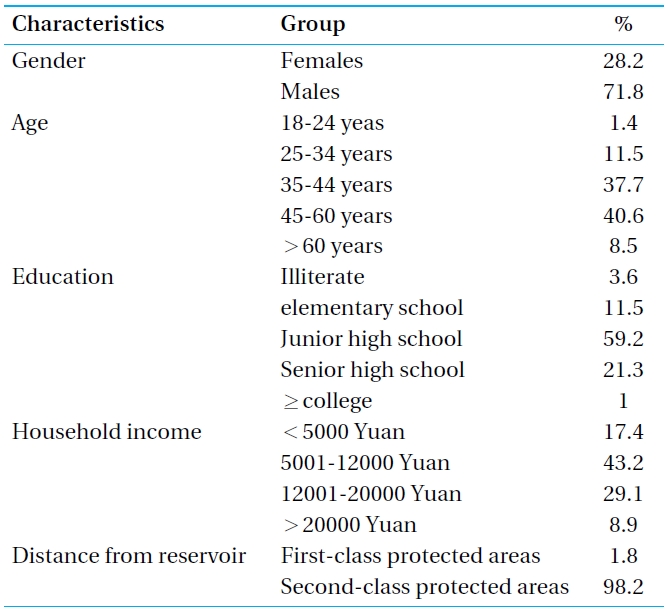
Characteristics of the sample respondents
Table 1 summarizes the characteristics of the survey respondents in the watershed. From the incomes listed in the table, the daily living costs were 60% of the total income.
First-class protected areas refer to those areas within a distance of 5-10 km from the reservoir. The actual boundary is the road around the reservoir. Second-class protected areas refer to the catchments to the road around the reservoir.
Most survey respondents were Males (71.8%). The education level of the locals was not high; 59.2% of the survey respondents were at the Junior high school level. The average age was between 35-60 years (78%) and their average income ranged from 5001-- 20000 Yuan (77%).
5.2. Knowledge of Local People about Environment
It was found and documented that the local people pay less attention to the situation of the reservoir, especially to the understanding of the pollution sources. The direct reasons were: (1) the villagers have their own sources of potable water, and (2) the local people lack access to more information from the media. TV is the main medium by which they obtain knowledge about the reservoir environment. The survey documented that local people were concerned more for their residence areas than for the quality of the reservoir. Novotny[18] argued that this phenomenon represents a pollution externality[19], whereby upstream polluters are detached from downstream impacts on the water users in Beijing and there is no market mechanisms allowing the downstream users in the Beijing metropolitan area who experience water shortages and poor water quality to receive compensation or remedy from upstream polluters. Users of water in Beijing have higher incomes than the villagers living in the watershed, who are relatively poor. Such situations must in any economic system be resolved by government intervention, by making beneficiaries (government) pay, and providing incentives for most of the improvements. The survey results indicated that there was a dualistic pattern in the environmental awareness of local people, who paid more attention to the proximate living environment and less to the somewhat distant eco-environment of the reservoir.
5.3. Environmental Attitudes of the Local People Residing in the Watershed
The attitudes of local people toward improvement of the living environment and their willingness to pay for environmental protection and reservoir protection were measured using the Likert scale method[20], as follows:
First, a Kendall logistic regression analysis was applied between the three aspects to assess their connectivity, and the results showed a remarkable correlation with Significance (Sig.) (2-tailed) ≤ 0.05. Then, a 1-5 scale was used to evaluate the different levels of attitude, where 1 represented nonsupport, 2 indifference, 3 reliance on the government, 4 limited support, and 5 complete support. The average final grade based on 780 questionnaires was 3.52, i.e. between a reliance on the government to limited support. However, the standard deviation was 1.14, which indicated that there was significant variability among the awareness of people.
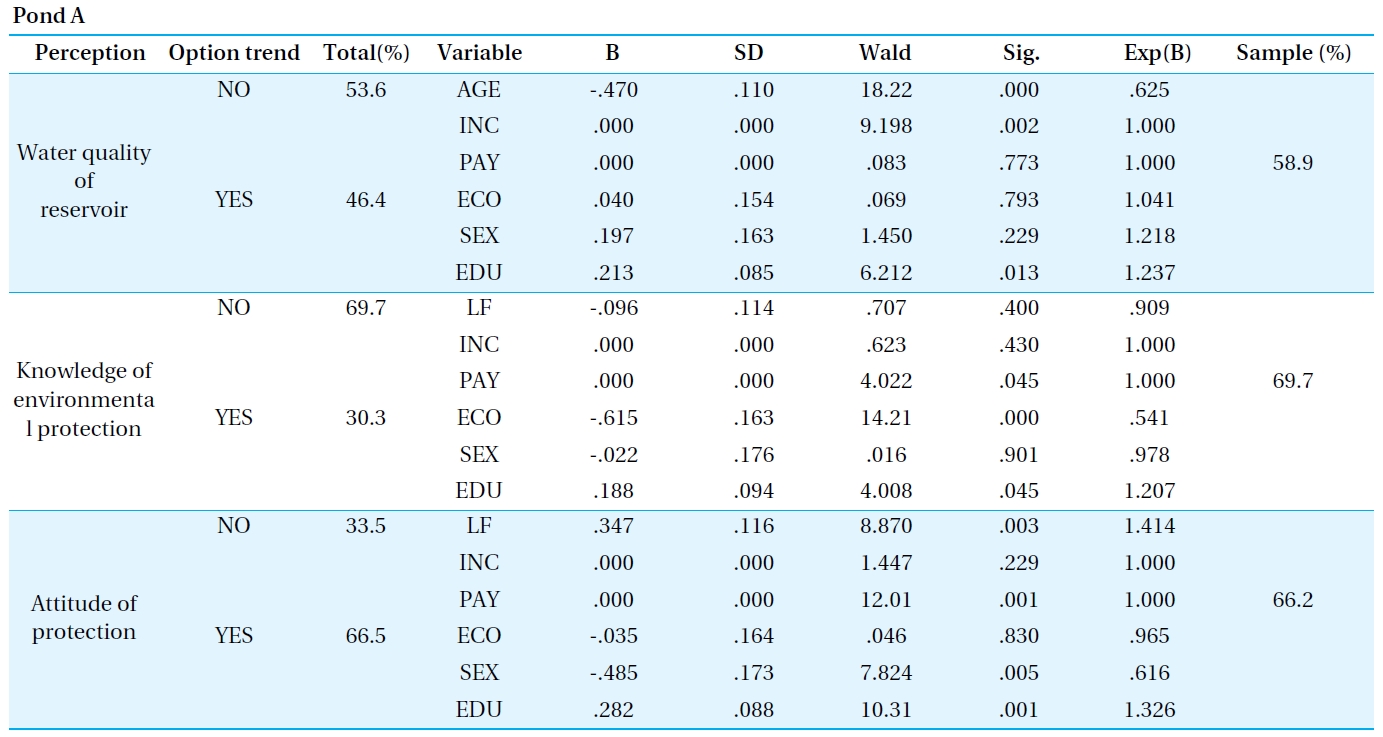
Logistical analysis of the environmental consciousness of the people and the influencing factors
Detailed results showed that nearly 49% of villagers thought environmental improvement should be carried out by both individuals and the government; 35.8% thought environmental improvement should the responsibility of the government; and only 10% thought environmental improvement should be their own responsibility (Fig. 4).
5.4. Willingness to Pay (WTP) of Local People
First, the perception of the willingness to pay of local people was assessed, with the following results: 18.6% of respondents were unwilling to pay (3.7% of respondents with 0 Yuan payment), 32.8% of respondents, including two parts of willing to pay (28.8%) and very willing to pay (4.0%), had a positive attitude towards some payment, and 48.6% of respondents expressed a high tendency to rely on the government, including submitting government (34.5%) and follow public (14.1%) (Fig. 5). The percentage of unwilling respondents was similar to that obtained in the Milwaukee study[14], which represents an expression of a "protest against taxation" of some citizens. The high percentage of citizens "relying on the government" may be a feature typical of China, where government services to the population are proportionally higher than, for example, in the US. The existence of the government financed "ecovillages" within the watershed is an example.
Seventy-seven point seven percent of respondents expressed a willingness to pay at different levels. The average amount was 16.1 Yuan (approx US$2)/ household per year, which is lower than previous research on willingness to pay in other areas. For example, WTP was 22.8 Yuan (US$2.85)/household per year for environmental improvement in a high-yield agricultural area in North China[21], Twenty point one Yuan (US$2.5)/household per year in rural areas of Tai Lake (Taihu)[22], 41 Yuan (US$ 5)/household per year in rural areas of Dianchi Lake[23]; however, it was higher than similar research on water quality protection of Miyun Reservoir[24]. The average annual income in this research area was 5,641 RMB Yuan/capita (approximately US$752), which was much lower than that in the other research areas. Duan et al.[25] found that local farmers living near the Miyun Reservoir would be willing the accept 5 Yuan per day for labor on environmental project activities related to watershed management in 2000. This indicates that a willingness to pay of 16 Yuan is not as small as it might appear to non-Chinese. Nevertheless, the survey indicated that villagers had a higher interest in protection activities close to their own living environment.
6.1. Social-Economic Impacts to Perception
The independent variables used in the estimation of the logistic regression model were as follows: age (AGE), Labor force (LF), family’ income (INC), family cost (PAY), gender (SEX), education (EDU), and distance of respondents’ residence from the reservoir (ECO). Survey data were analyzed with the aid of the Statistical Package for the Social Sciences (SPSS) version 10.0, at a significance level of p=0.05. The results are shown in table 2.
A Sig.≤0.05 would represent a remarkable correlation; Sig.≤ 0.01 an extremely remarkable correlation. Logistic results revealed that education level and household income were significant factors influencing the perception of respondents. Education was closely related to environmental awareness. In general, respondents with a high education level had more knowledge. Males had a more positive attitude than females, because most rural females in China stay at home and have a lower level of education. In contrast, females had more knowledge relating to the environment surrounding their household than males.
6.2. Impact on Willingness to Pay
Gender and marriage situation had no influence on the willingness to pay, but education level, income, and age did (Figures 6-8). Respondents in the age group of 35-44 years had the highest WTP. Education level and family income had positive correlations with WTP, which were the two predominant factors. In the US study in Milwaukee, the education effect on willingness to pay was also positive, but income had no effect. However, there is a great disparity in the incomes between the rather affluent suburban populations of Milwaukee connected to the rivers, and between the villagers in the Miyun Reservoir watershed; many were distant from the reservoir. The WTP of people from the firstclass protected areas was higher than that from the second-class areas due to the distance effect.
The local government has already built waste treatment facilities in some demonstration villages (eco-villages). Surprisingly; however, people from the eco-villages had a lower willingness to pay (14.97 Yuan (US$ 2.0)/ household) than those living in more traditional settlements (16.82 Yuan (US$ 2.2)/ household). In the previous section it was pointed out that the average person’s environmental attitude was in the range of “rely on the government” to “limited support.” External support, such as that from the government, appeared to weaken the awareness of people towards their own initiatives and responsibilities. In addition, the results showed people living in non-ecovillages had more requirements for environmental protection. In the future, it will be important to improve people’s awareness as a principle part of new countryside construction of wastewater and nonpoint source pollution controls funded by the government throughbenefit transfer from water users in Beijing.
Local people from the watershed of Miyun Reservoir were found to pay little attention to the environmental situation of the downstream reservoir. Although they had active attitudes toward environmental protection, the level of participation in the protection of the water quality of the reservoir was low, and exhibited a strong dependence on the government. Education level was the most significant factor influencing environmental awareness. Gender, labor force, family income and residence location were also influencing factors.
Regarding the willingness to pay (WTP) for rural domesticpollution abatement, the results were strongly impacted by theexternality effect, as follows: 77.7% of the villagers agreed to payfor improving their local living environment, with the averageWTP for per household being 16.10 Yuan (US$ 2)/year. WTP forenvironment protection is related to the attitude to andrecognition of environmental protection, education level andincome of villagers. Regional differences and the distance of thevillage from the reservoir had some relevance. However, the WTPof people living in the eco-villages (mostly in the first protectivezone) was lower than that of other villages. Improving awarenessof environmental problems by the media, increasing educationallevel and income are the prime ways to augment the villager’sdesire to protecting and enhance the environmental quality of thereservoir, as well as partially overcome the effect of externality.
This work was supported by the Project of National natural science foundation (40871219, 40971258) and the Sino-German Cooperation project (2009DFA92440). The authors thank Mr. Xinguang Cai and Ms. Lianrong Wang from the Water Soil Protecting Station of the Miyun County, Beijing, for their help in the investigation, and to Professor Charles Melching of Marquette University, Milwaukee (WI), USA, for helping on an obvious improvement of the manuscript. Special thanks to anonymous referees for his final editorial help.
